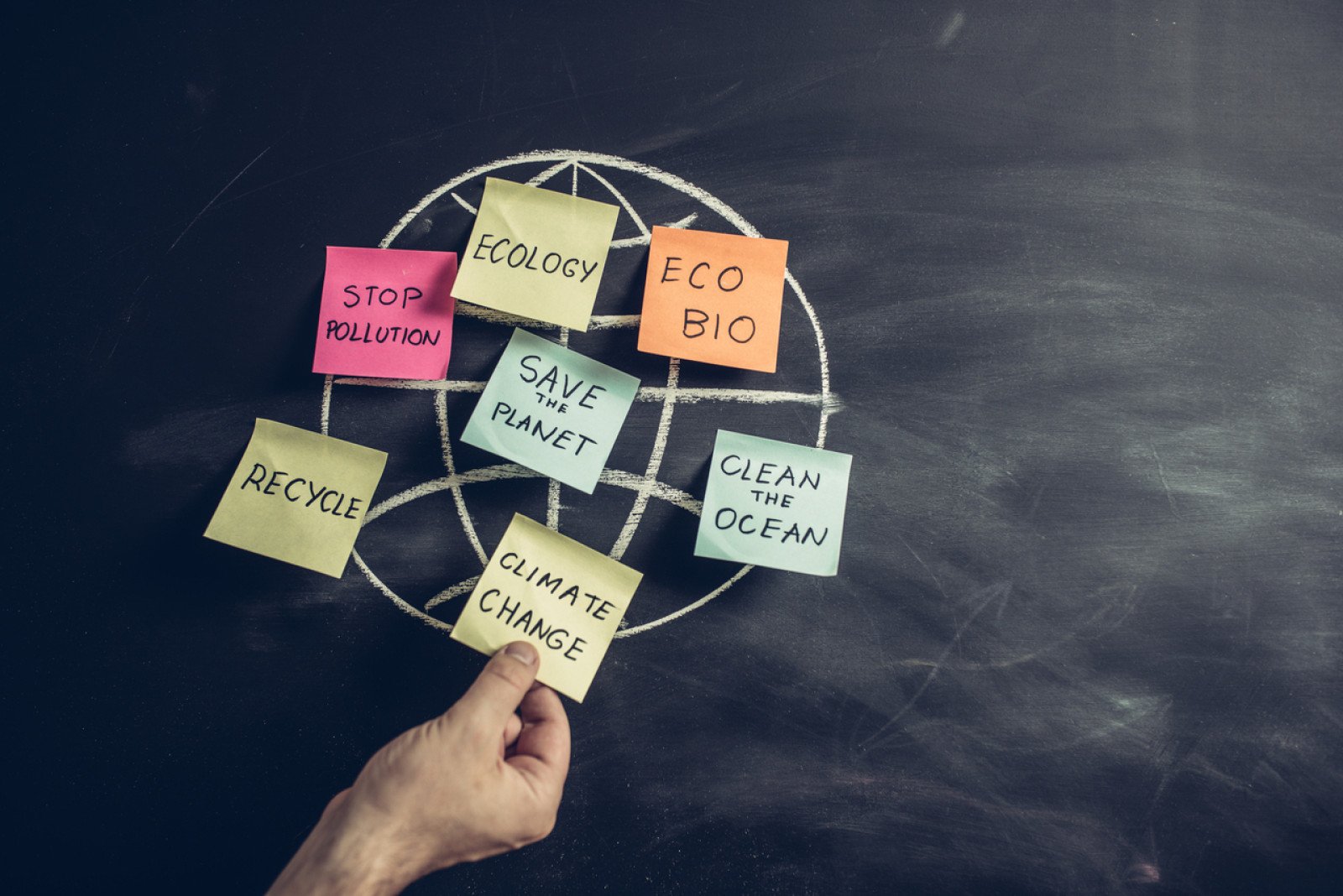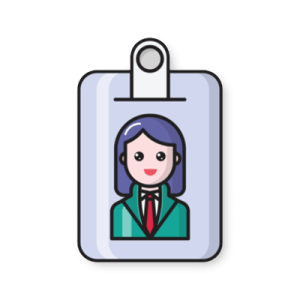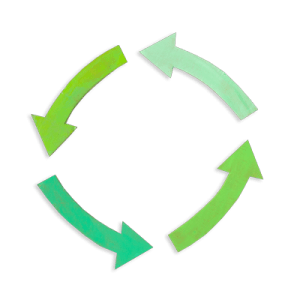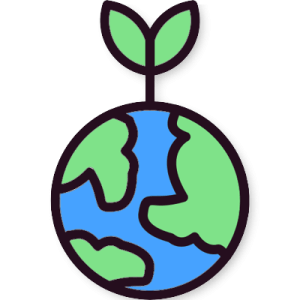Where do you stand on energy conservation?
Play Four Corners to find out what your students think about energy, conservation, climate change and sustainability.

Overview
Where do your students stand when it comes to perspectives related to energy, conservation, climate change and sustainability? Share opinions about what’s important to your students and consider other perspectives related to energy use and caring for the environment.
Instructions
What you'll need
- Four signs – Strongly agree, Agree, Disagree, Strongly disagree
- “Where do you stand?" statements
- “Where I stand” worksheet
Before class set up
- Label the four corners of the room with signs that read “Strongly agree”, “Agree”, “Disagree” and “Strongly disagree”.
- Decide which statements students will focus on, from the “Where do you stand?" statements. A variety of topics and ideas are provided so you can choose which are most relevant to your class and students.
Where do your students stand?
- Explain that in the Four Corners activity, students discuss what they think about how our energy use affects climate and sustainability, and what we can do about it. Review best practices for a respectful discussion.
- Everyone decides their own opinion about a statement. There isn’t a correct answer.
- Everyone is expected to share their ideas and actively listen to other ideas and perspectives.
- Give each student a “Where I stand” worksheet and read one of the chosen statements.
- Give students a couple minutes to write down the statement, what they think about it and which corner they choose to stand in, using the worksheet.
- Repeat with as many statements as you want to discuss in the class. Page 1 of the worksheet has room for three statements. Make additional copies if you’re choosing to do more than three statements.
- Once students have noted their thoughts, go back and read the first statement.
- Have students move to their chosen corner and discuss their opinion with someone else in their corner.
- One or two students from each corner share their perspective with the class.
- Allow time for discussion and questions between the corners.
- Repeat with the next statement until all chosen statements have been discussed.
Reflection
- Have students fill out the reflection section of the worksheet.
- Discuss some of their responses as a class.
Modify or extend this activity
- Invite an Indigenous Elder or Knowledge Keeper to speak to the class about the perspective that everything is connected and our actions impact the environment.
- Have students choose one of the statements to research and write an opinion piece about.
- Modify the activity for distance learning with written reflections and breakout groups in video conferencing for discussion.
Curriculum Fit
Core competencies
Communication
- Communicating
Thinking
- Creative thinking
- Critical and reflecting thinking
Personal and social
- Social awareness and responsibility
Science 10, 11, 12
Big ideas
- Energy is conserved, and its transformation can affect living things and the environment (Science 10)
- Scientific understanding enables humans to respond and adapt to changes locally and globally (Science for Citizens 11)
- Human practices affect the sustainability of ecosystems (Environmental Science 11)
- Living sustainably supports the well-being of self, community and Earth (Environmental Science 12)
Content
- Local and global impacts of energy transformations (Science 10)
- Beneficial scientific innovations (Science for Citizens 11)
- Actions and decisions affecting the environment (Science for Citizens 11)
- Human actions and their impact on ecosystem integrity (Environmental Science 11)
- Personal choices and sustainable living (Environmental Science 12)
Curricular competencies
Questioning and predicting
- Make observations aimed at identifying their own questions about the natural world
Processing and analyzing data and information
- Apply First Peoples perspectives and knowledge and local knowledge, other ways of knowing, and local knowledge as sources of information
- Analyze cause-and-effect relationships
Applying and innovating
- Contribute to care for community and world through individual and collaborative approaches
- Contribute to finding solutions to problems at a local and/or global level through inquiry
Communicating
- Communicate scientific ideas, information and suggested course of action for a specific purpose and audience
- Express and reflect on a variety of experiences, perspectives and worldviews through place
First Peoples Principles of Learning
- Learning is holistic, reflexive, reflective, experiential and relational.
- Learning involves recognizing the consequences of one’s actions.
- Learning involves patience and time.
Assessments
- Assess students’ ability to communicate their perspectives, engage with and listen to others during the Four Corners activity.
- Assess students’ ability to consider different perspectives in their reflection on the “Where I stand” worksheet.
- Assess students’ understanding of the impacts of their actions and ways they can care for the environment in paired and class discussion, as well as the “Where I stand” worksheet.
Teaching Notes
Energy and climate change
We use energy in our daily lives in many ways. We use it to get to school, power our lights, cook our food, heat our homes and to make and transport goods. Some of our energy comes from clean renewable sources like the sun, wind and water. In B.C., most electricity is generated from water, a clean and renewable source.
Fossil fuels (coal, oil and natural gas) come from ancient plants and animals. Burning fossil fuels releases greenhouse gases into the environment that had previously been trapped underground. Greenhouse gases, including carbon dioxide, methane, nitrous oxide and water vapour, trap heat from the sun and warm the Earth. Activities that use fossil fuels (transportation, manufacturing, heating, etc.) generate most greenhouse gas emissions in B.C.
Energy conservation
Energy conservation means using less energy by changing our behaviours. Smart energy use and energy conservation actions have a positive impact on the future. See Power Smart tips and the video "How can we save energy with lighting" for ideas on ways to save electricity.
Learn more about energy conservation through the video "What is energy conservation".
Energy-efficiency
Energy-efficiency refers to technologies that help complete a task with less energy. Innovation continues to develop new and creative ways to reduce our energy use through technology (energy-efficient appliances, energy-efficient light bulbs, etc.).
Everything is connected
The concept that everything in the environment and natural world is interconnected is foundational to Indigenous perspectives of land and place. It is understood that we have a responsibility to care for the land, plants and animals through everything we do and the choices we make.
Our energy choices
Our energy choices impact the environment when fossil fuels are burned, releasing greenhouse gases. When we use less energy and choose clean renewable energy sources, we reduce our impact on the environment and help care for the Earth now and for future generations. Every little action adds up to making a big difference and creating a sustainable energy future.








